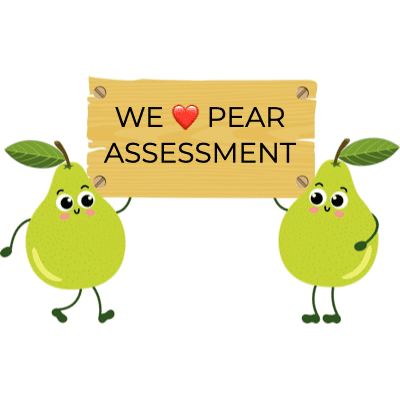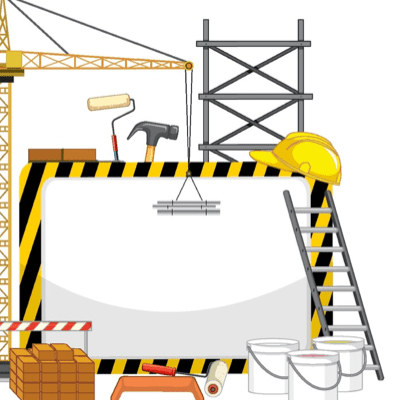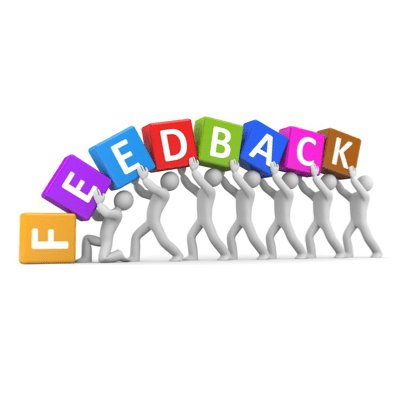

Peer assessment is a powerful tool for learning and improvement. When students assess each other’s work, they have the opportunity to develop their critical thinking skills, to learn from their peers, and to give and receive constructive feedback. James Hattie
Introduction to Peer Assessment
Peer Assessment is the third Evidence Based Learning skill proven by research to maximise learning.
Peer assessment involves learners evaluating and making judgments about the work of peers.
Being exposed to the work of peers helps learners self-evaluate their own work more effectively because they are making comparisons between their own work and the work of others.
Giving feedback to peers about their work is often more beneficial than receiving feedback because it is more cognitively-engaging.
Giving feedback involves higher-order processes, such as application of criteria, diagnosing problems and suggesting solutions.
The development of student feedback literacy: enabling uptake of feedback – Carless and Boud – Taylor and Francis – May 2018
Feedback from peers can be delivered with more immediacy.

Peer assessment is a process of learners assessing one another’s work and giving informed feedback about that work.
Peer assessment should happen during the learning process – on works in progress, and be followed by opportunities for learners to use the feedback they received to revise their work.
Peer assessment is a valuable tool because feedback from peers can be delivered with more immediacy and in greater volume than teacher feedback.
Measuring Success with Peer Assessment – Bloomberg – May 2015 – Corwin Connect
Learners need to identify strengths and possible improvements in their partner’s work and then give feedback about this to their partner
Feedback needs to be given to each other by learners working in pairs. Effective feedback will identify at least one of the strengths in their partner’s work and the feedback should say why this part of the work was good.

The feedback should also outline one area for future development and make a suggestion as to how this might be done.
Learning about Learning – Learning and Teaching Scotland
The advantages of peer assessment (1)

Peer assessment teaches learners how to avoid mistakes and how to improve, but more than this, it teaches them that mistakes are avoidable and that improvement is possible.
It shows learners that achievement is not dependent on innate talent, but on doing the job well.
It is difficult to overestimate the importance of this message; it has been shown to have a huge effect on learners’ motivation and achievement.
Formative Teaching Strategies
The advantages of peer assessment (2)
The process of marking another’s work has a number of striking advantages over having your work marked by the teacher.
Learners see alternative ways of answering the question, or solving the problem; they see model answers or worked solutions and have to study these closely during the marking; and they see where marks are gained and lost. This makes the ‘goals’ clear.
Learners also have to make judgements about their peer’s work, which requires them to clarify their understanding of the subject matter, and the goals set.
Formative Teaching Strategies
Peer assessment is usually formative (1)

Formative assessment
takes place during the learning
during learning

summative assessment
takes place after the learning
after learning
Peer assessment is usually formative (2)
If used effectively, peer assessment – a formative assessment strategy that encourages learners to comment on the work of their peers
– can improve learners’ understanding of success criteria, help them to become more engaged in learning and develop their interpersonal skills, as well as potentially even reducing teacher workload.
Black et al, 2003; Topping, 2017
Using peer assessment as an effective learning strategy in the classroom Sept 2018 – The Chartered College of Teaching
With formative peer assessment work can be improved as the work is being done
Summative assessment (also known as assessment of learning) contains key diagnostic data for teachers, but this information is perhaps too infrequent, or comes too late for the results from this type of assessment to be used to improve future learning
Formative assessment (also known as assessment for learning) is, on the other hand, a more flexible and informal way of assessing a learner’s progress and their understanding of certain subject matter.
Formative assessment helps learners to identify their strengths and weaknesses and target areas that need work in the here and now while the learning is still carrying on.
An introduction to formative and summative assessment – The National Foundation for Educational Research in England and Wales
Summative assessment can lead to a focus on performance rather than on learning
Summative assessment is a high-stakes method of evaluation. And, for pupils who suffer from anxiety, the process can be debilitating.
Not all pupils learn the same way, and there is unease that summative assessment works best for those pupils that thrive by learning via a specific teaching style (the transmission of knowledge).
On the other hand, pupils who prefer active and creative learning experiences may not do as well. So, school results would only provide a narrow view of a child’s ability and willingness to learn.
Critics of summative assessment also believe this method can result in both teachers and pupils becoming overly concerned with performance rather than learning goals.
Does summative assessment risk learning outcomes? – ResourcEd – Promethean 2020
Summative assessment sums up the learning after the learning is over
Summative assessment evaluates learning at the end of a learning period so it always takes place when the learning is over. This type of assessment cannot therefore be used to modify or improve the learning.
Summative assessment also generates marks or grades. These marks or grades allow the assessment of each learner to be compared against every other learner.
Adapted from: Types of summative assessment and formative assessment – Jan 2018 Promethean
Android 1 – you got 6 out of 10 questions correct.
And THAT is what you call a summative assessment.
Peer assessment is more effective than both no assessment and teacher assessment

Overall, our findings provide support for the use of peer assessment as a formative practice for improving academic performance.
The results indicate that peer assessment is more effective than both no assessment and teacher assessment, and not significantly different in its effect from self-assessment.
These findings are consistent with current theories of formative assessment and instructional best practice and provide strong empirical support for the continued use of peer assessment in the classroom and other educational contexts.
The Impact of Peer Assessment on Academic Performance A Meta-analysis of Control Group Studies – Double et al 2019 – Springer
When introducing the concept of peer feedback to pupils it is important to scaffold this process for them
T-A-G provides a peer feedback scaffold
T-A-G is a feedback scaffold that provides a simple introduction to giving feedback and is particularly useful when using peer feedback with younger pupils.
The scaffold represents:
T – Tell them something you like about the work
A – Ask a question about the work
G – Give a suggestion for improvement to the work
T-A-G peer feedback – July 2018

Peer feedback needs to be scaffolded
How would I use T-A-G feedback?
Before inviting pupils to give feedback it is important to give them a clear focus for their feedback so, rather than getting general comments that are not necessarily going to improve the work, they are given useful, specific feedback.
This feedback might sound like this:
T – I really like the way you’ve…
A – Why did you decide to…
G – I think you should think about…
It is important for the recipients of the feedback to have the opportunity to reflect on the feedback given and are given time to act on the suggestions.
T-A-G peer feedback – July 2018

Peer feedback needs to be useful and specific
The advantages of peer assessment (1)

If used effectively, peer assessment has many benefits It helps students develop lifelong skills in assessing and providing feedback to others, and also equips them with skills to self-assess and improve their own work.
Conversely, however, peer assessment can hinder students’ learning if poor-quality, insensitive or unhelpful peer feedback is exchanged, and may strain relationships between learners.
Feedback should be task-involving, focusing on key elements of the success criteria that have been met and giving details about how the work might be enhanced (Kamins and Dweck, 1999).
Guiding students to provide task-involving feedback is more likely to motivate them to learn and make subsequent improvements in their work (Kamins and Dweck, 1999).
Peer Assessment – Center for Teaching Innovation Cornell University 2023
Using peer assessment as an effective learning strategy in the classroom Boon – Sept 2018 – Impact
Summary 1
Peer assessment involves one pupil looking at another pupil’s work to:

First identify what was good
Pupils identify what in their partner’s work has been done well and then they explain to their partner why it has been done well.

Then identify what could be better
Pupils then identify what could have been done better in their partner’s work and then they give feedback to their partner about how the work could be made better.
Summary 2
Peer assessment can be developed in this way:
Tell your partner why it was good.
Write this improvement at the bottom of their work.
Tell your partner why.
Give your partner an idea for this.


You look at my work and I’ll look at yours.
This is called reciprocal peer assessment so there!
The benefits of peer assessment (1)

“Pupils learn a lot from their peers so using peer assessment increases opportunities for learning”
Pupils use peer assessment to provide feedback to other pupils in relation to the quality of their work. Peer assessment encourages collaborative learning and swapping ideas. This helps the pupils develop a number of critical skills. The learning process is enhanced and pupils gain a sophisticated grasp of the learning objectives.
Pupils learn a lot from their peers so using peer assessment increases opportunities for learning. This encourages pupils to take ownership of their learning and be more involved in the learning process.
Another benefit of peer assessment is that it makes the assessment process more clear.
Peer Assessment – The eLearning network Lauren Hay – June 2018
The benefits of peer assessment (2)

Marking another pupil’s work gives the assessor a new perspective
Pedagogically, peer assessment can be empowering for pupils because it gives them the opportunity to develop multiple skill sets at once.
Marking another pupil’s work gives the assessor a new perspective, and encourages them to more closely consider their own work, while judging the correctness of answers will enable them to deepen their understanding of a topic.
Talk Among Yourselves – How To Make Peer Assessment Work – July 2016
The benefits of peer assessment (3)

Peer assessment is the process of pupils assessing each other’s work rather than handing it in to the teacher
There are different ways of implementing peer assessment in your classroom. It can be given in the form of a grade (peer grading) or a comment (peer feedback).
It can be a really effective way to engage pupils with new ideas, as well as helping them to reflect on their own work and motivate them to engage with course material more deeply.
But for peer assessment to be valuable, it must encourage pupils to properly engage with each other’s work and make considered suggestions for improvement. This in turn enhances pupils’ learning through knowledge diffusion and exchange.
Talk Among Yourselves – How To Make Peer Assessment Work – July 2016
The benefits of peer assessment (4)

Peer assessment can reap rich rewards
Initially peer feedback should highlight positive aspects of the work in question. Then it should move on to aspects that might be improved.
You might think that this form of elaborated peer assessment sounds rather time consuming, and you would be right. But during the process both assessor and assessee are presented with many intellectual challenges, set in the context of a piece of work that the assessee feels rather strongly about.
As a result, both assessor and assessee have to think quite deeply, as well as negotiate a settlement, so not only are their thought processes stimulated, but their social skills as well. Consequently they both learn – and not just in one domain. So the investment of time by a teacher can reap rich rewards.
Peer Assessment: Learning by Judging and Discussing the Work of Other Learners – Topping 2017 – University of Dundee
The benefits of peer assessment (5)
Formative peer assessment is more elaborate assessment
The simple form of peer assessment is where teachers have peers grade or mark the work of another peer. This kind of use is a mainly a type of summative assessment.
The elaborated form of peer assessment is much more developmental. Teachers have a peer independently assess the work of another peer, but the assessor then gives elaborated feedback and discusses their assessment with the assessee, giving a rationale and examples to support their judgements, and the assessee responds with their own thoughts.
Subsequently (and after further independent reflection) the assessee revises the work in the light of the discussion. This kind of use is more clearly a type of formative assessment
Adapted from: Learning by Judging and Discussing the Work of Other Learners – Topping 2017 – University of Dundee
Conclusion I

Peer assessment “enables pupils to achieve beyond what they can learn unaided”
Peer assessment and self-assessment is much more than pupils marking their own or each other’s work.
To improve learning, it must be an activity that engages pupils with the quality of their work and helps them reflect on how to improve it.
Peer assessment enables pupils to give each other valuable feedback so they learn from and support each other. It adds a valuable dimension to learning: the opportunity to talk, discuss, explain and challenge each other enables pupils to achieve beyond what they can learn unaided.
Peer Assessment and Self Assessment
Conclusion II

“Peer assessment is a powerful tool…
Peer assessment is a powerful tool for fostering student learning and development in the 21st century classroom.
By engaging in this process, students learn to evaluate their own work and the work of others, providing valuable feedback that can lead to improved performance and increased motivation.
Peer assessment encourages students to take an active role in their own learning, helping them to develop important metacognitive skills and become self-directed learners.
Adapted from: Peer Assessment: A Powerful Tool for Learning National Education Association (NEA) 2016
Conclusion III

“Peer assessment is a powerful tool for promoting student learning”
Peer assessment is a powerful tool for promoting student learning. It can help students to develop a deeper understanding of the material they are learning, to identify their own strengths and weaknesses, and to give and receive constructive feedback.
It can also lead to improved student motivation and achievement.
Inside the Black Box: Raising Standards through Classroom Assessment – Paul Black and Dylan Wiliam 1998
Conclusion IV

Peer assessment creates a “collaborative classroom learning environment”
Peer assessment not only benefits the individuals being assessed, but also helps to create a supportive and collaborative learning environment.
When students are asked to assess each other’s work, they are forced to think carefully about the criteria for success and to communicate their ideas clearly. This process can help them to develop their own understanding of the material and to learn from each other.
In addition, peer assessment can help to build a sense of community in the classroom, as students come to see themselves as responsible for each other’s learning.
Peer Assessment: A Powerful Tool for Learning – Dylan Wiliam 2007
Conclusion V

Peer assessment promotes self-regulation and metacognition
Peer assessment can be particularly effective in promoting student self-regulation and metacognition, and it can also help to improve student motivation and engagement.
Inside the Black Box: Raising Standards through Classroom Assessment – Paul Black and Dylan Wiliam 1998









